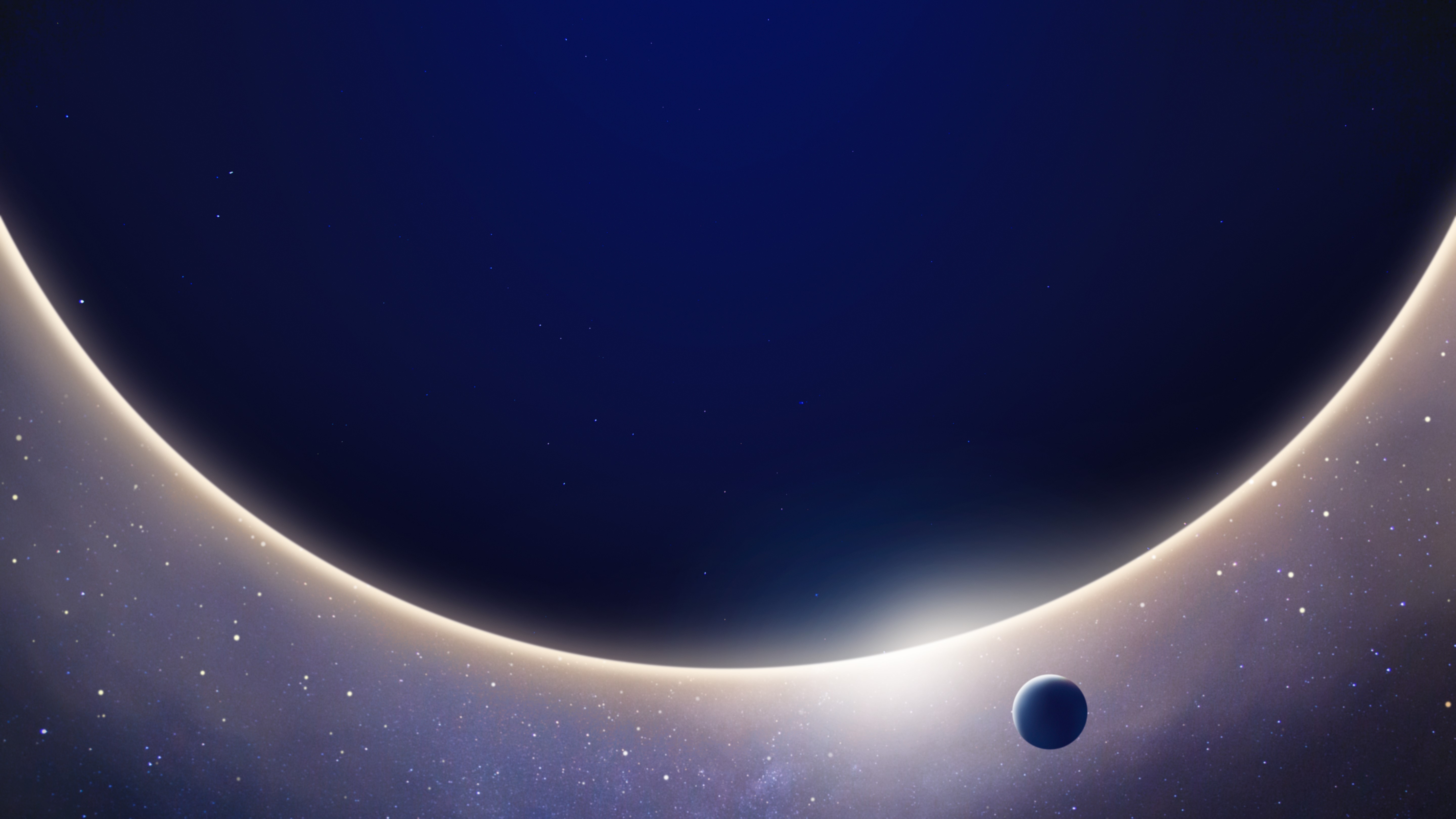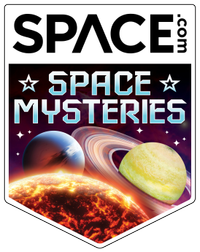What is the biggest planet ever found?
It might surprise you that there is more than one candidate…


The universe is vast — possibly even infinite — and in the scheme of things, our planet is tiny. Even in our own solar system, Earth is dwarfed by gas giants like Jupiter. But are there bigger planets out there? How much bigger? What is the biggest planet we know of?
The answer depends on several factors, including how you define a planet. Even so, there are a few candidates for the largest known planet. One of the largest is called ROXs 42Bb, a gas giant orbiting a star about 460 light-years from Earth. It is about nine times the mass of Jupiter and has a radius of about 2.5 that of Jupiter.
Related: How high can we jump on other worlds?
Thayne Currie, an associate professor of physics and astronomy at the University of Texas — San Antonio, told Space.com he thinks it's unlikely that this planet is truly the largest known. Currie identified ROXs 42Bb from data from the Keck Space Telescope in 2013 (another group independently identified the object around the same time). There are known objects around the same size as this exoplanet and even larger, Currie continued.
"There are a couple of planets that are actually protoplanets, so they're still being assembled," he said. "I would suspect those are actually larger." These two protoplanets both orbit the star PDS 70 about 370 light-years from Earth and have a radius between two and four times that of Jupiter. Another candidate for the largest planet, HAT-P-67 b, had a radius larger than two times that of Jupiter, which is similar to ROXs 42Bb.
Why the uncertainty? One reason has to do with the different ways scientists measure the size of exoplanets. ROXs 42Bb, for instance, was directly imaged — "seen" as an independent object using the Keck Telescope. The protoplanets orbiting PDS 70 were also directly imaged. Scientists don't have any way to directly measure the size of these planets, so they have to infer their size based on other factors like their brightness and patterns in the wavelengths of light they give off. Scientists use models to determine these things, and these models are not always 100% correct.
Other objects are detected using the transit method, which is when an object appears to cross in front of its host star during its orbit and temporarily dims the star. Exoplanets detected in this way, like HAT-P-67 b, can be directly measured. So it might be a better bet that this planet has over twice the radius of Jupiter.
The other uncertainty comes from the issue of how to define a planet. Though most people know that stars are very large and planets are much smaller, there's a middle ground — an object called a brown dwarf, which is too small to be a star but is larger than a planet. Though the core of a brown dwarf is not hot enough to fuse regular hydrogen like a star would, it can fuse deuterium, a special form of hydrogen that contains a neutron.
Scientists agree that brown dwarfs are not planets. What's less clear is how to distinguish between the two.
"Some people identify a strict cut off in mass," said Currie. "So anything above 13 Jupiter masses is a brown dwarf and anything below is a planet."
But more recent observations have revealed that the universe doesn't necessarily "agree" with this rule. Research by Currie and his colleagues highlights that the turnover between planet and brown dwarf can happen at a much higher mass — maybe 25 times the mass of Jupiter or even more massive. It also seems that it's more important how massive an object is in comparison to its host or companion star, said Currie.
Even then, there are some complexities. For instance, Currie says that although he would call ROXs 42Bb a planet (or a "planetary-mass companion"), he suspects its formation was more similar to how stars form. Typically, planets like Jupiter form a rocky core, which attracts a disk of dust and gas that gradually becomes a globular planet. ROXs 42Bb may have formed in a different way, where parts of the dust and gas disk were so massive and heavy that they collapsed in on themselves.
The way an object forms is not currently a part of the formal definition of a planet. Some scientists refer to planetary-mass companions that formed like this as "sub-brown dwarfs," though Currie said he "would not call that a thing." He said scientists disagree on what to call ROXs 42Bb because of its high mass ratio (its mass compared to the mass of its star) and how far away from that star — over five times the distance between our sun and Neptune.
Though the debate over what "counts" as a planet may seem arbitrary, it highlights big questions about what different planetary systems might look like, particularly those vastly different from ours, said Currie.
"Our own solar system is just one of many innumerable outcomes," he said. "So it's kind of fun to see how a planetary system could be different."
Join our Space Forums to keep talking space on the latest missions, night sky and more! And if you have a news tip, correction or comment, let us know at: community@space.com.
Get the Space.com Newsletter
Breaking space news, the latest updates on rocket launches, skywatching events and more!

Rebecca Sohn is a freelance science writer. She writes about a variety of science, health and environmental topics, and is particularly interested in how science impacts people's lives. She has been an intern at CalMatters and STAT, as well as a science fellow at Mashable. Rebecca, a native of the Boston area, studied English literature and minored in music at Skidmore College in Upstate New York and later studied science journalism at New York University.
-
rod ROXs 42Bb, the exoplanet sites show properties for this exoplanet listed as a likely very large exoplanet and biggest as this article states.Reply
https://exoplanet.eu/catalog/roxs_42b_ab_b--1419/
This exoplanet is imaged and about 140 au from the star.
https://exoplanetarchive.ipac.caltech.edu/overview/ROXs%2042%20B%20b#planet_ROXs-42-B-b_collapsible
Space.com says near the end, "Our own solar system is just one of many innumerable outcomes," he said. "So it's kind of fun to see how a planetary system could be different."
Using the exoplanet.eu site, there is 2728 exoplanets that are 0.73 AU or closer to their stars compared to our solar system configuration from Venus inward. The average mass is 2.39 Mjup, so there is a bunch of large exoplanets orbiting very close to their stars compared to the configuration in our solar system with a very habitable Earth teeming with life and plant life. -
unclefishbits Could someone possibly visually represent the estimations on this data? Just curious, asking for my brain.Reply -
Helio Reply
Perhaps this will help. The brown color represents the possibility that these are really Brown Dwarfs.
Normally, planets do not grow in size much larger than Jupiter since increasing their mass causes the extra gravity to restrain radial growth. But, if a planet is hot, as many of these likely are, then their atmospheres grow very large.
I assume many of these top 10 will drop off the exoplanet list someday. But, for now, they are listed and designated as exoplanets.
I'll leave these tough questions to astronomers, which I'm not. :) -
unclefishbits there should be rewards or gold or something here, because I am amazed you did this. So fantastic, I cannot thank you enough. Definitely going in my next newsletter, then... it's non-monetized so it's not too brazen to link it, but the top category is always "space", so you may enjoy! Can't wait. I should credit your username, then? THANK YOU! WILD!!!!Reply
https://unclefishbits.com -
Helio Thanks! Feel free to use anything I show, but remember to credit anyone I list as an author, if mentioned.Reply
I hope you will include my thoughts on why the first 10 were not mentioned in the main Space.com article. The astronomer mentioned happens to live in my city. :)
I enjoy doing some basic artwork for illustrative purposes, like this. If you have another need of this, or two, let me know, I might have some free time to whip something out. -
Helio Also, you might want to check out the latest in Exoplanet data results.Reply
There is a lot of info in those tables, so feel free to ask if you are interested in understanding any particular part of it.










